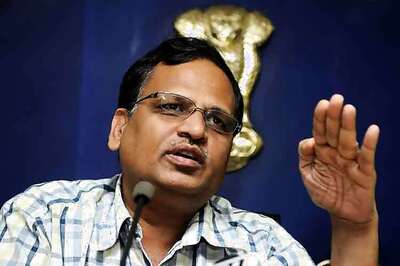
views
In 1995, when King et al published an article in what is at times thought to be the clinical bible of diabetes (Diabetes Care 1998), he articulated for the very first time that India would house the largest number of patients with diabetes approaching around 20 million. The article had also prophesied that the number of diabetics in the country would stand at 57 million by the year 2025. The prediction has not been false, but proven to be an underestimate. Today, in 2011, we stand at the precipice of reckoning and the predictions of Dr King have outlasted his own life. According to the findings of the ICMR sponsored INDIAB study, published just over a month ago in Diabetologia 2011, India is faced with a galloping diabetes epidemic, which is progressing at a speed which challenges the meanest and fastest on the F-1 circuit in a figurative sense. There are now an estimated 62 million patients with diabetes in India and this number is projected to explode beyond 85 million by the year 2030. While diabetes in urban areas, with places like Kochi having figures in excess of 20% and Chennai at 17%, the epidemic is sweeping like a typhoon across the subcontinent and engulfing rural areas as well, and across terrains which were previously perceived as untouched. A study done by our group from rural Tripura, the first of its sort in the north-east part of the country and published in Journal of the Association of Physicians in India 2007, demonstrated that a part of rural Tripura had a prevalence of diabetes of 9%. This was in contrast to parts of Himachal Pradesh, which had a prevalence of 0.4% in the early 1990s. The changing patterns of disease in a country, which still has a major proportion of the population in rural areas may be predictors of stories which may foretell a gloomy future.The explosive growth of diabetes from across the country from the 1980s till now is essentially multi-factorial, which is very real and large. The real reasons would be inclusive of: a) cable television, b) economic liberalization c) more processed food and fast food d) increased academic competitiveness (thereby reducing physical activity) e) Mobile phones and computers f) Increased life expectancy- 67 years for males now as opposed to 56 in 1980 and 64 for females, at present. I am indeed particularly fond of calling the jump in the prevalence of diabetes in the 1990s and their subsequent impact on teenage obesity in this millennium as the “Murdoch phenomenon”, thanks to Rupert Murdoch for giving us cable television, which has perpetuated our populace to sit on their backsides for umpteen hours in a day adding to the catapult effect with regards to blood sugars. The hours of cricket being viewed on television, perpetuated unashamedly by mega-circuses like the Indian Premium League, not only serve to fatten the purses of those who run the industry, but also broaden the backsides and the waistlines of youngsters and elderly enhancing their propensity to develop diabetes! Surely our haloed film stars instead of munching bags of potato chips in voluminous quantities can show us how they manage to keep their figures trim and attractive by demonstrating methods of pumping iron or performing sessions of aerobics!In 1998, wise men put their heads together and decided by consensus that the cut off point for diabetes with regards to the fasting sugar should be reduced from 140mg/dl to 126mg/dl. This was a decision taken based on the fact that it appeared that “microvascular disease” as generally gauged by diabetic involvement of the retina was present at much lower levels. From a scientific perspective, the decision was correct. However, many epidemiologists were not open about this fact when they published studies and data after 1998, mentioning the increasing prevalence of diabetes. In an ideal setting they should have declared this in their publications - but they did not. They should have published “corrected” figures taking into account the new definition. (The author is Professor and Head, Dept of Endocrinology, Diabetes and Metabolism at Christian Medical College, Vellore)

















Comments
0 comment